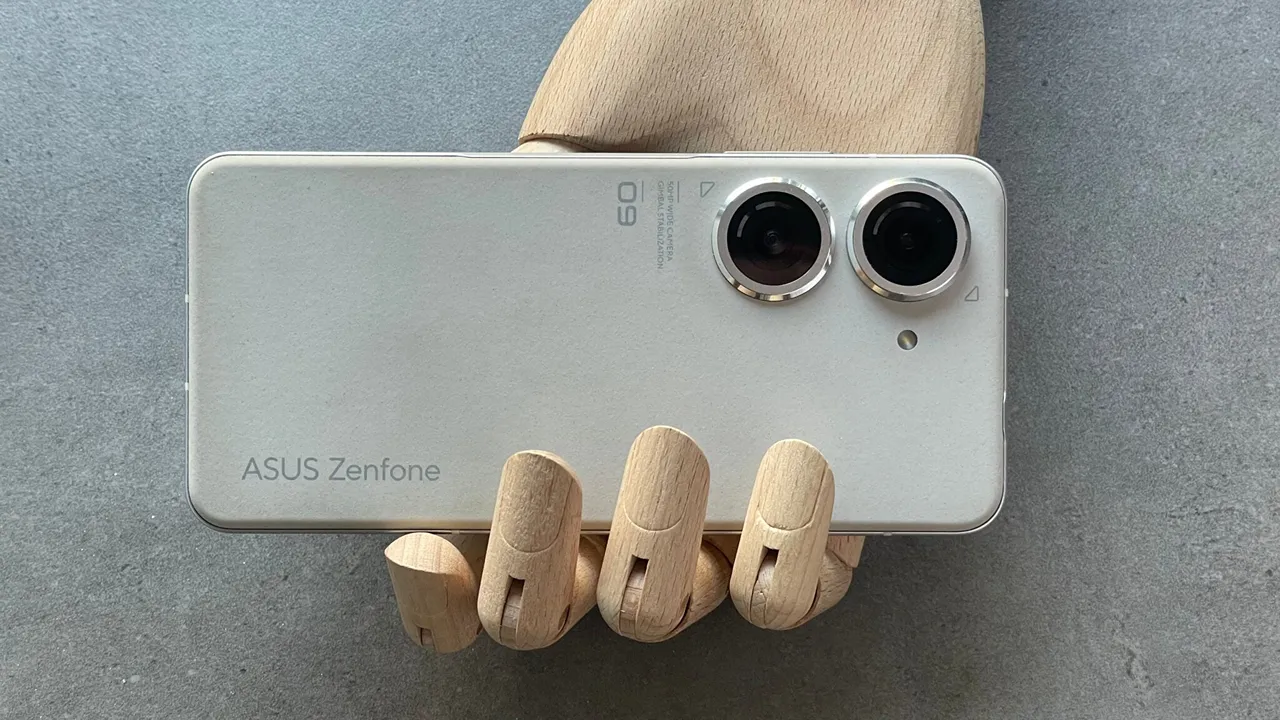Review Asus Zenfone 9
- Set
- Housing and build quality
- Display
- Sound
- Performance
- Battery
- Cameras
- Software
- Profitability
Summary
In the past, smaller smartphones meant worse performance and fewer functions – but not in the case of the Zenfone 9. Here in a compact body we get a full-blooded flagship with a top processor, great sound and powerful cameras, but also a few disadvantages that are difficult to ignore.
At the end of July, ASUS presented the latest installment of the flagship series – the Asus Zenfone 9 model. It is distinguished not only by the top specification, excellent display and the latest Snapdragon – its most important feature is its compact size – at least by the standards in 2022. Certainly Zenfone 9 will appeal to all those who prefer small, more handy devices – the smartphone has a screen not exceeding 6 inches and fits comfortably in the hand. But there is tremendous power in this little body.
Benefits
- Brilliant display
- high performance
- presence of a headphone jack and a dedicated DAC
- support for aptX Lossless, aptX Adaptive and LDAC codecs
- stereo speakers developed in collaboration with Dirac
- compact dimensions of the device
- handiness and ergonomics
- seamless fingerprint scanner (also supports gestures)
- gestures after double-tapping the back of the phone
- great image stabilization (gimbal OIS) in the main camera
- all cameras with AF
- friendly and well-optimized Zen UI interface
- the ability to record voice calls
- extensive gaming mode
- good working times
- complete set (cable, charger, case)
- a lot of gigabytes of RAM
- dust- and water resistance
Disadvantages
- Massive cameras, strongly protruding above the casing
- no telephoto lens
- no wireless charging
- only two versions of memory – no support for microSD cards
- the camera is not at the level of competing flagships
- software updates not as long as those of the competition
- high temperatures for gaming and throttling
- wired charging is not very fast
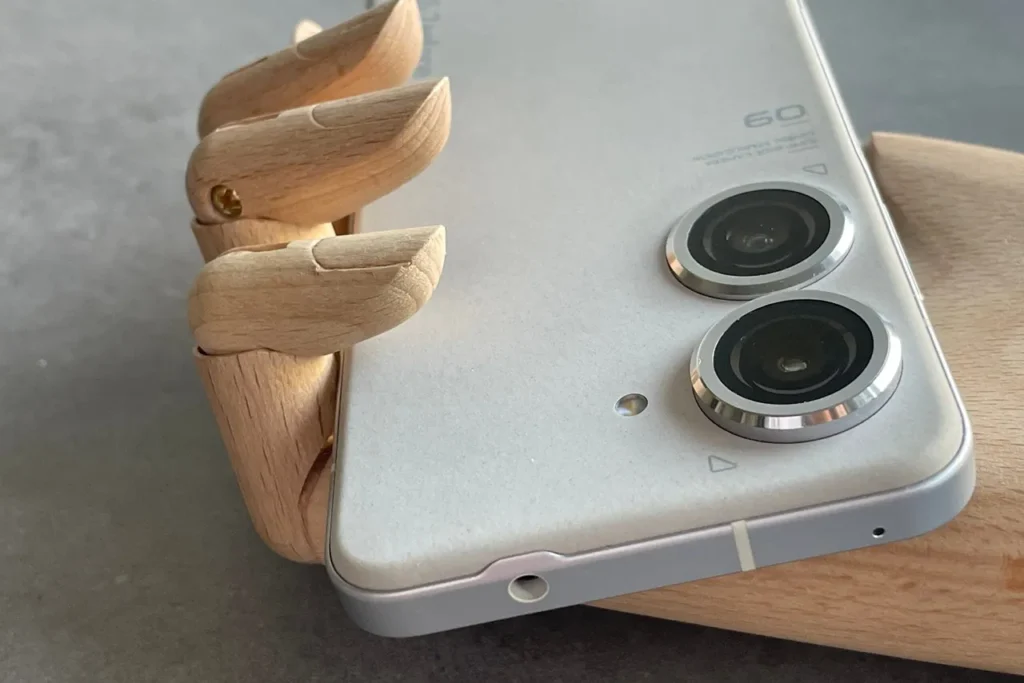
Contents
Specification and price
- Display : AMOLED, 5.9 inch diagonal, resolution 1080 × 2400 pixels (445 ppi), refreshing 120 Hz, 112% DCI-P3, HDR10 +, brightness up to 1100 nits, Corning Gorilla Glass Victus
- Processor : Snapdragon 8+ Gen 1 with Adreno 730
- RAM : 16 GB LPDDR5
- Internal memory : 128 GB UFS 3.1
- Cameras: main 50 Mpix (Sony IMX766, 1 / 1.56 inch sensor, Gimbal OIS, PDAF, f / 1.9); ultra wide-angle 12 Mpix (Sony IMX363, 1 / 2.55 inch sensor, Dual PDAF, f / 2.2, field of view 113 degrees); front 12 Mpix (Sony IMX663, 1 / 2.93 inch sensor, Dual PDAF, f / 2.45)
- Battery : 4300mAh with 30W quick charge
- System : Android 12 with ASUS ZenUI 9
- Connectivity : Wi-Fi 6 / 6E (802.11 a / b / g / n / ac / ax, 2.4 GHz / 5 GHz / 6 GHz), Bluetooth 5.2, NFC, navigation (GPS / Glonass, Galileo, BeiDou, QZSS, NavIC ), 3.5mm mini-jack headphone connector, USB-C
- Other : stereo speakers, Qualcomm Aqstic WCD9385 DAC, two microphones with OZO Audio Noise Reduction technology, IP68 standard
- Dimensions : 146.5 x 68.1 x 911 mm
- Weight : 169 grams
The reviewed model has 16 GB of RAM and 256 GB of internal memory – this is the most powerful version of Zenfone 9, priced at USD $920. In addition, you can buy the 8/128 GB model for USD $749 or 8/256 GB for $794 . It is worth adding that among the flagships of the flagships Samsung Galaxy S22 or Sony Xperia 10 IV (or maybe the announced Xperia 5 IV ) have similar sizes – there is not much choice among Android smartphones. Among the iPhones, you can look at the iPhone 13 mini , for example .
What’s in the set?
Together with the smartphone in an elegant dark gray box, we get a USB-C cable, a 30 W charger, a paper manual, a pin for opening the SIM card tray and a beige plastic case.
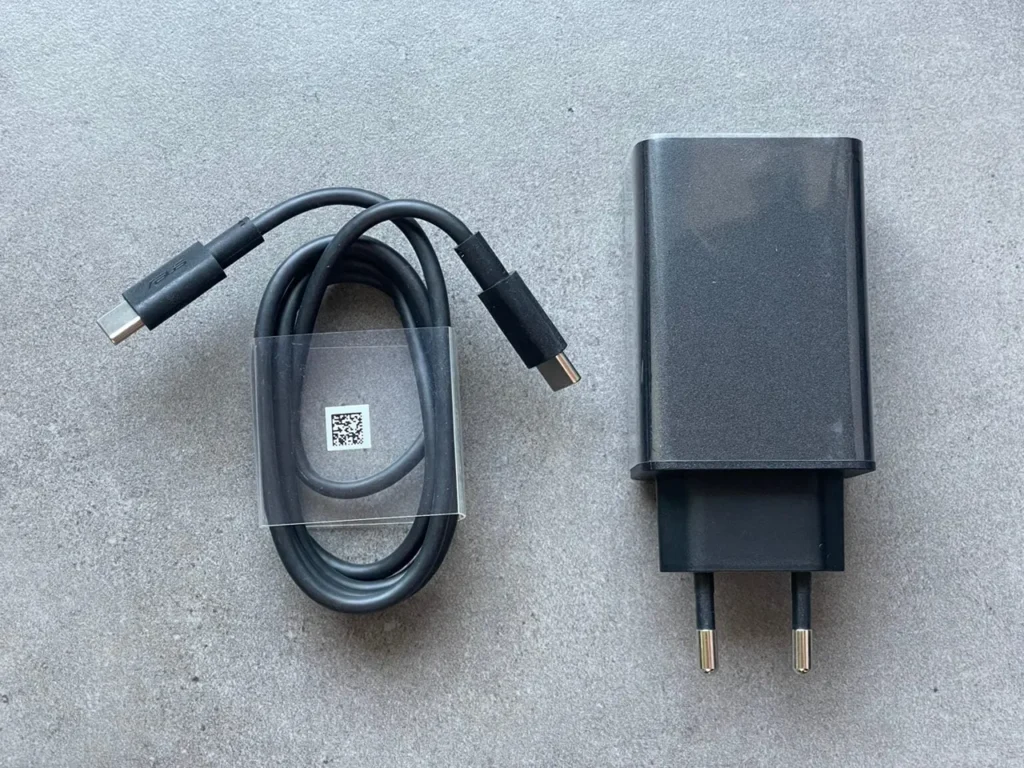
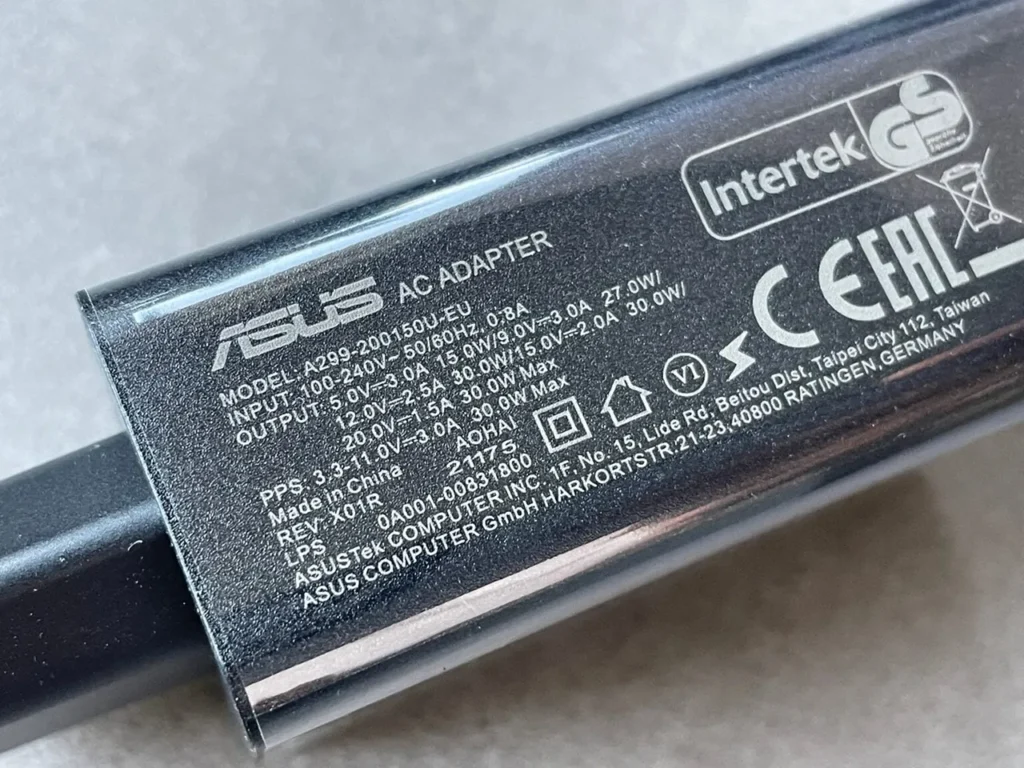
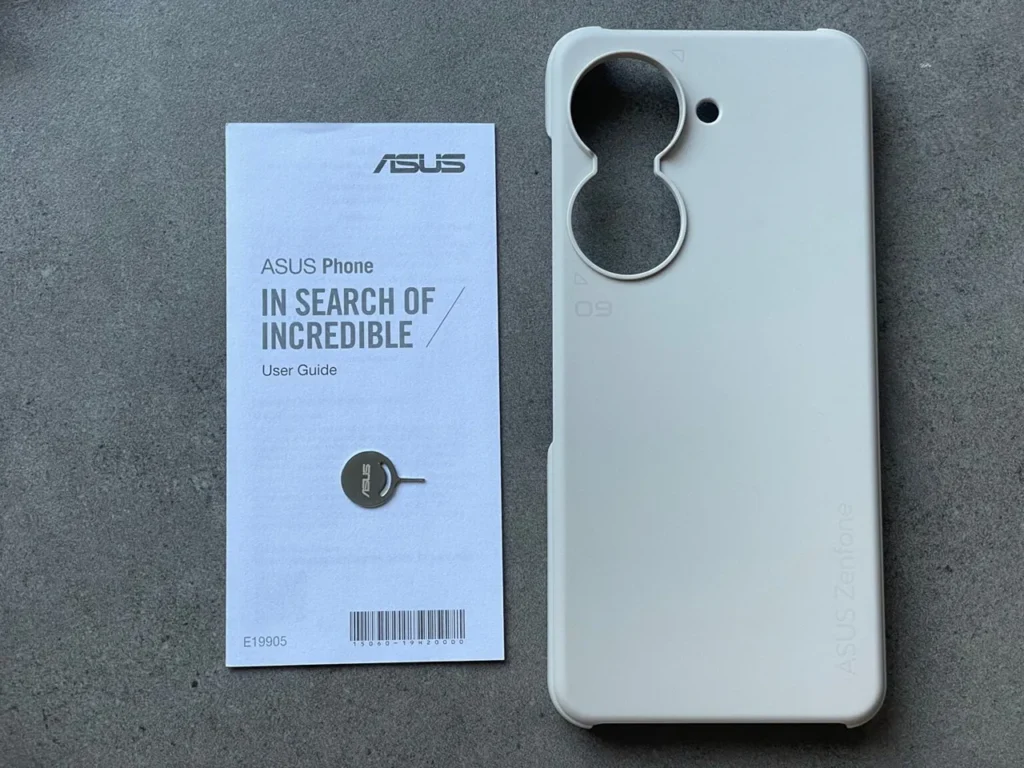
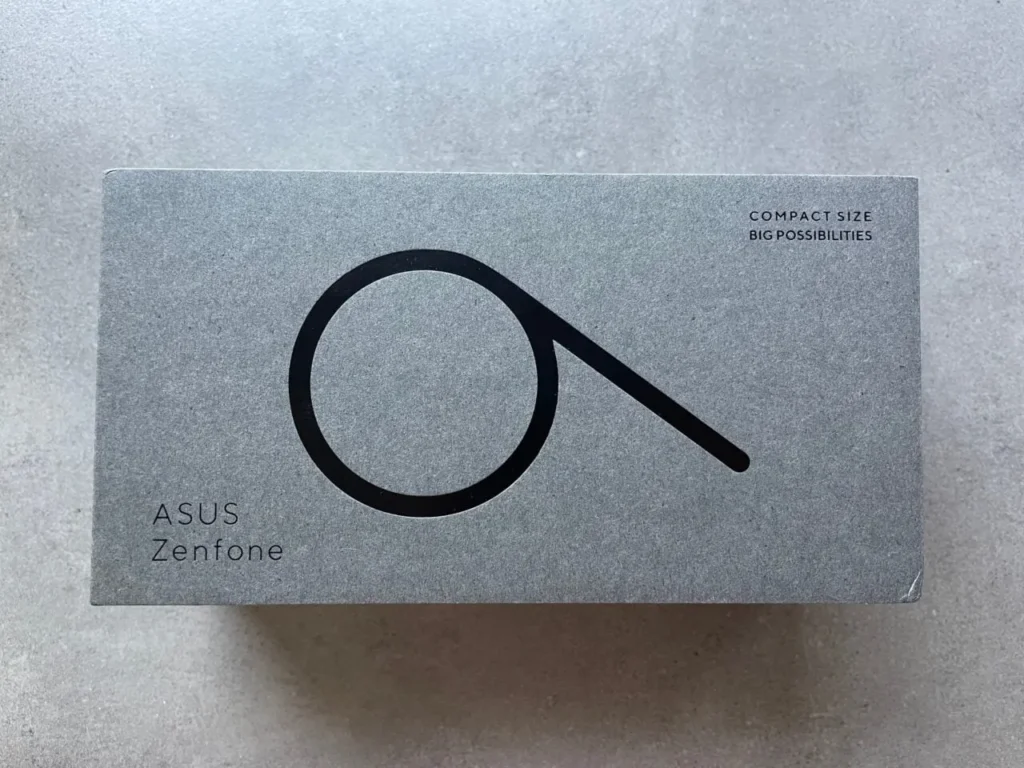
Accessories for Zenfone 9
A number of accessories have been prepared for Zenfone 9, for example the Connex Accessories Set . Connex is a new brand of ASUS, which is to provide modular accessories to make working with a smartphone even easier. In this case, we get a case to which we can attach a pocket for cards / business cards / documents or a module with a footer – after opening it and placing the phone in horizontal orientation, the selected application will be automatically launched, for example Netflix.
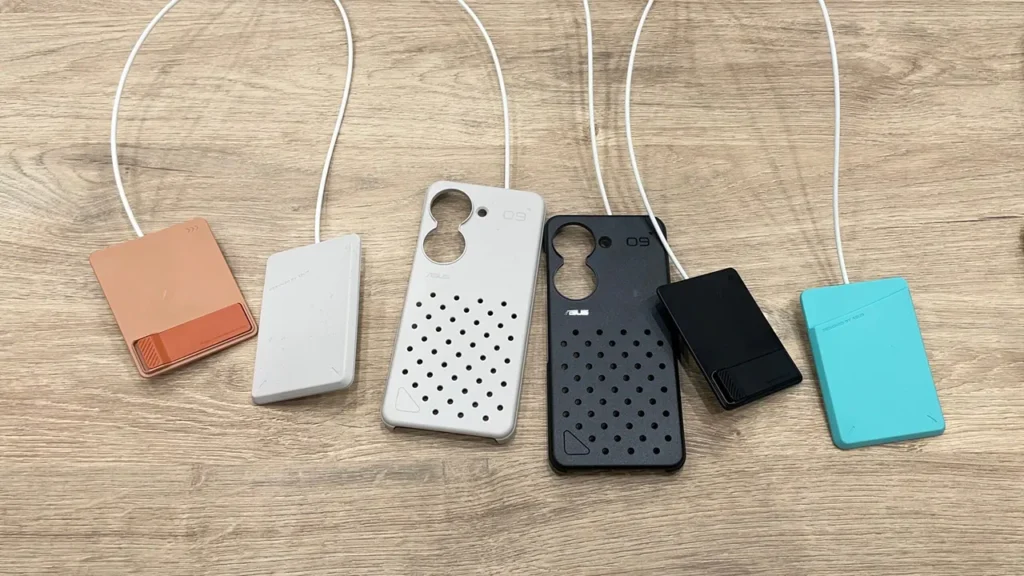
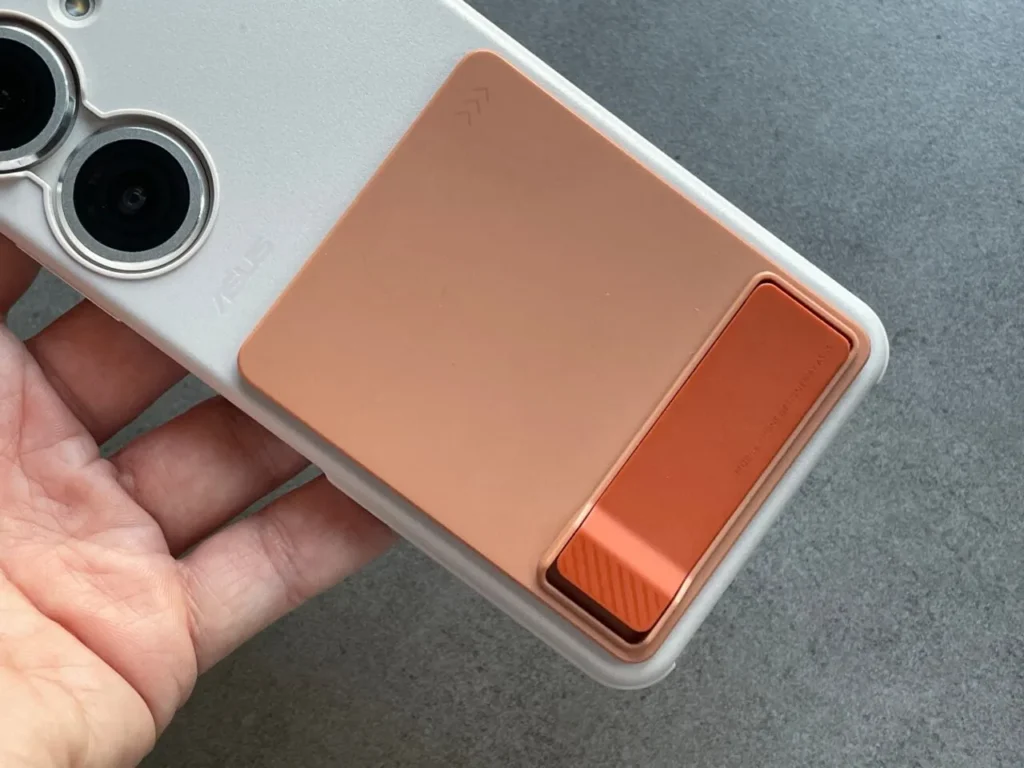
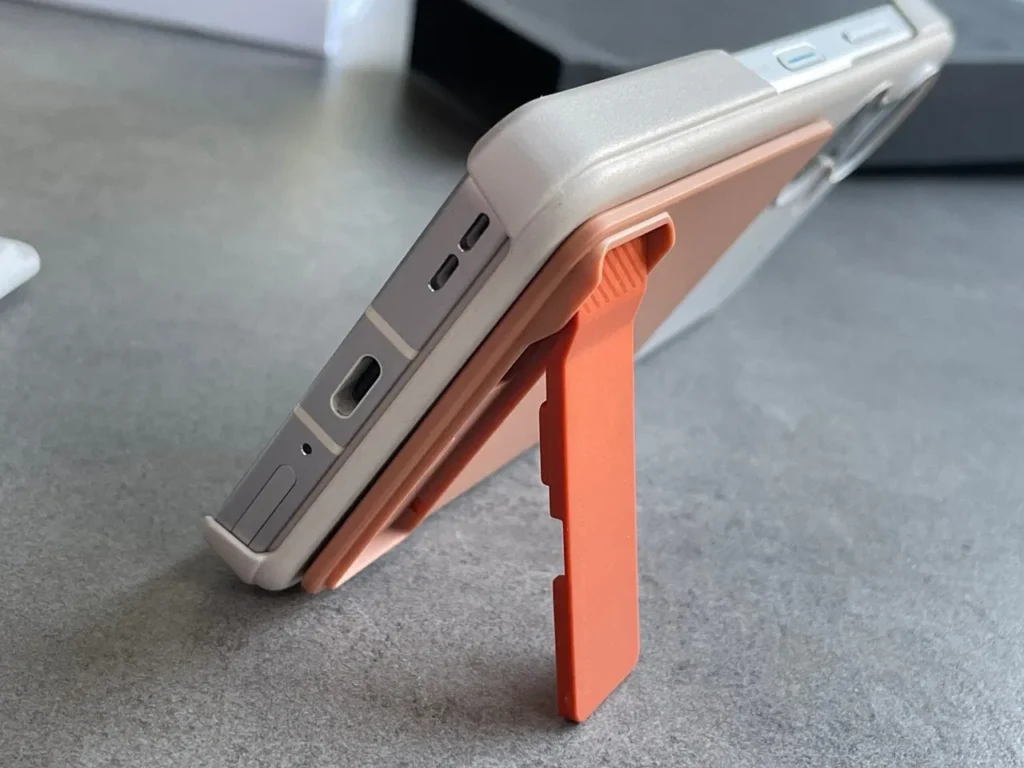
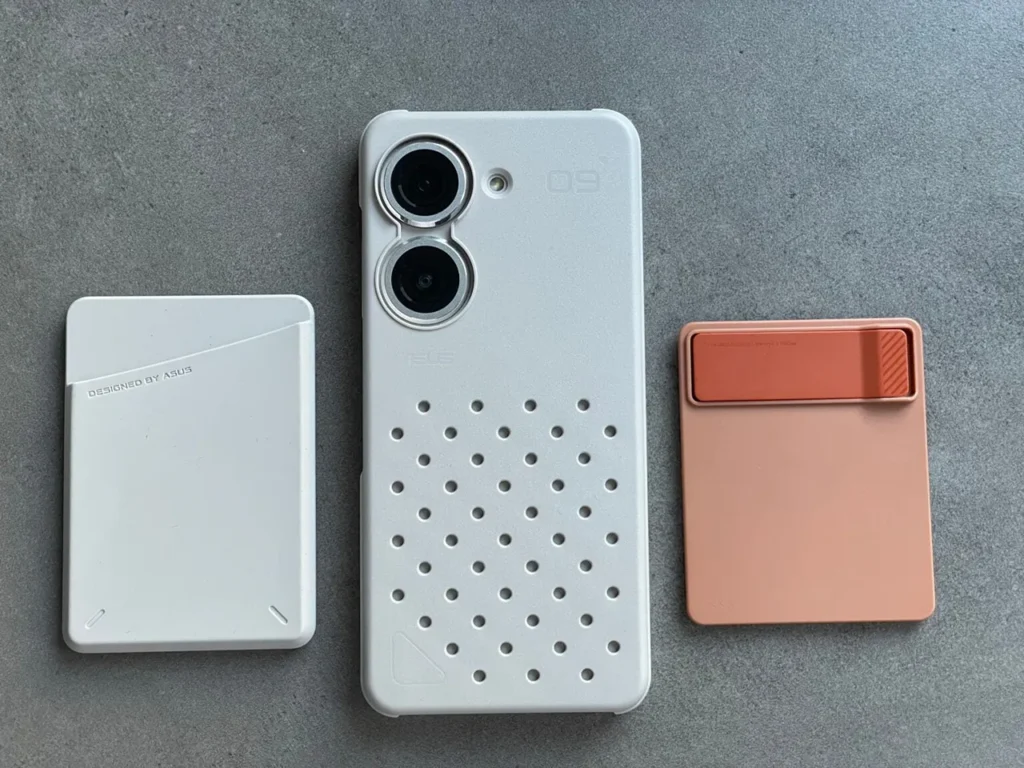
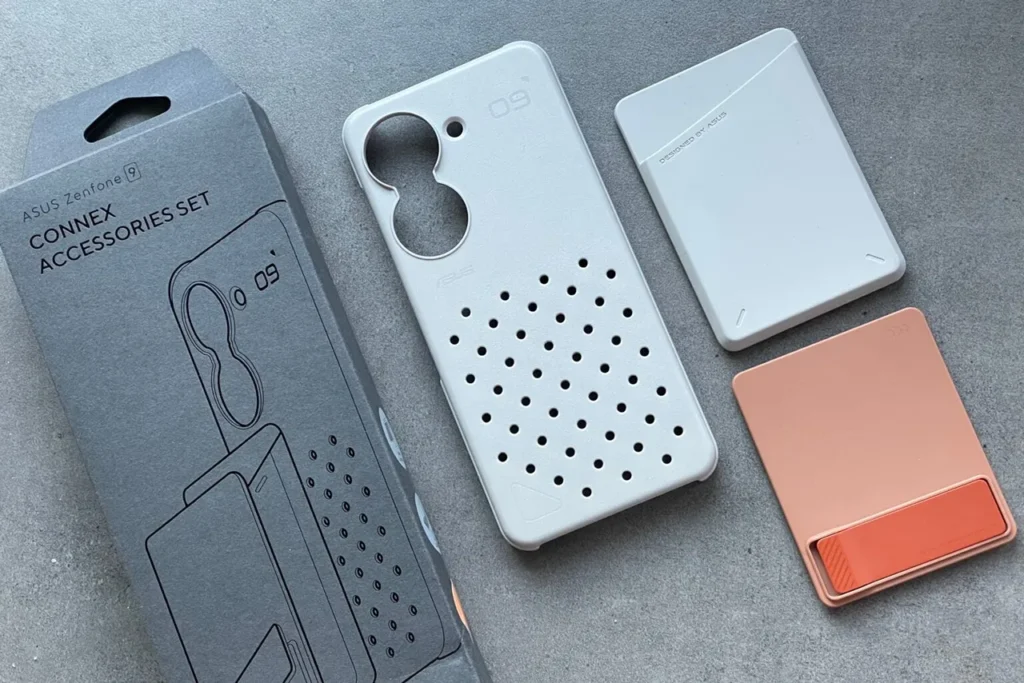
I also had the opportunity to check the Impact Resistant case by Osophter and kwmobile TPU Case , designed for ASUS Zenfone 9 .
Construction of Zenfone 9
Size is one of the more important criteria when choosing a new smartphone – alongside a good camera, overall performance and battery life. And although manufacturers focus on larger and larger screens, there are still many people who prefer smaller, more handy devices. And for them, ASUS Zenfone 9 can be a great choice – especially since it not only offers a relatively compact shape, but also powerful power. The new flagship with a 5.9-inch screen can be operated with one hand, and it got two powerful cameras and a battery with a capacity of 4300 mAh.
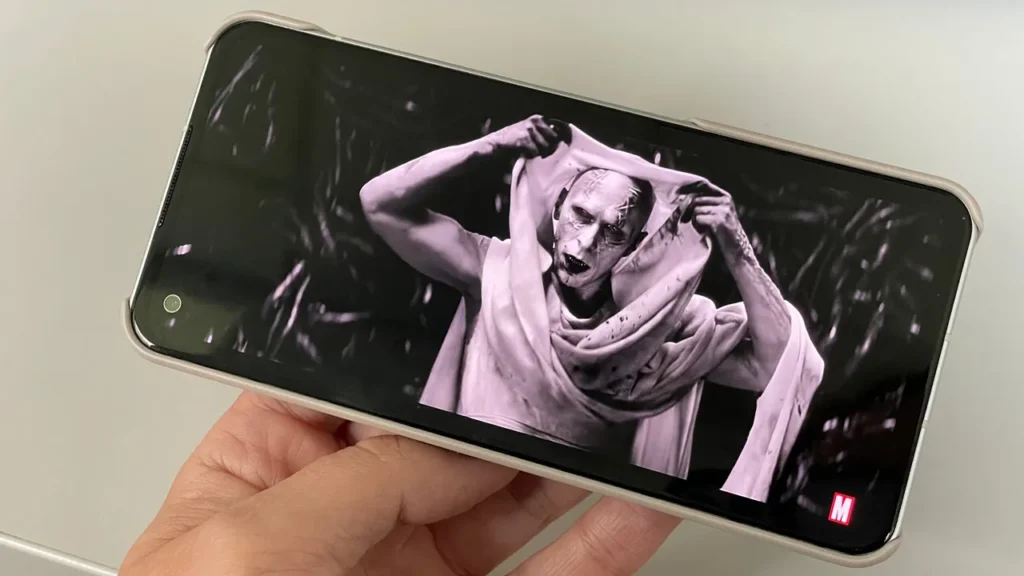
The front of Zenfone 9 is practically mostly occupied by a flat screen – except for small frames, a hole for a selector camera and a speaker slot at the top edge of the device. The display is a 5.9-inch Samsung AMOLED panel with a resolution of 2400 x 1080 pixels with an aspect ratio of 20: 9, refresh rates up to 120 Hz and a maximum brightness of 1100 nits. However, this is not an energy-efficient LTPO (Low Temperature Polycrystalline Oxide) panel that would offer a variable refresh rate.
The screen is perfectly polished in terms of colors – the manufacturer states that the delta E is less than 1, so the human eye receptors should not note the difference between the pattern and the color produced. Moreover, the display offers 112% coverage of the DCI-P3 color gamut and 151.9% of the sRGB color gamut. It is also HDR10 and HDR10 + certified and protected by Corning Gorilla Glass Victus. What’s more, the screen works well for people who wear polarized glasses.
In general, in the case of the Zenfone 9 display, I do not see any flaws – it is a great screen, with accurate color reproduction and good viewing angles, as well as a high refresh rate.
The casing is a brand new, lightweight polymer material with a texture that provides a firm grip and no fingerprints. The visual aspects are a matter of taste, but it certainly works better in practice. It will not slip out of your hand, will not slide off a not entirely flat surface, it is easier to keep clean and is more durable than the shiny glass surfaces of many modern cells. The pancakes are dominated by two cameras, quite protruding above the housing.
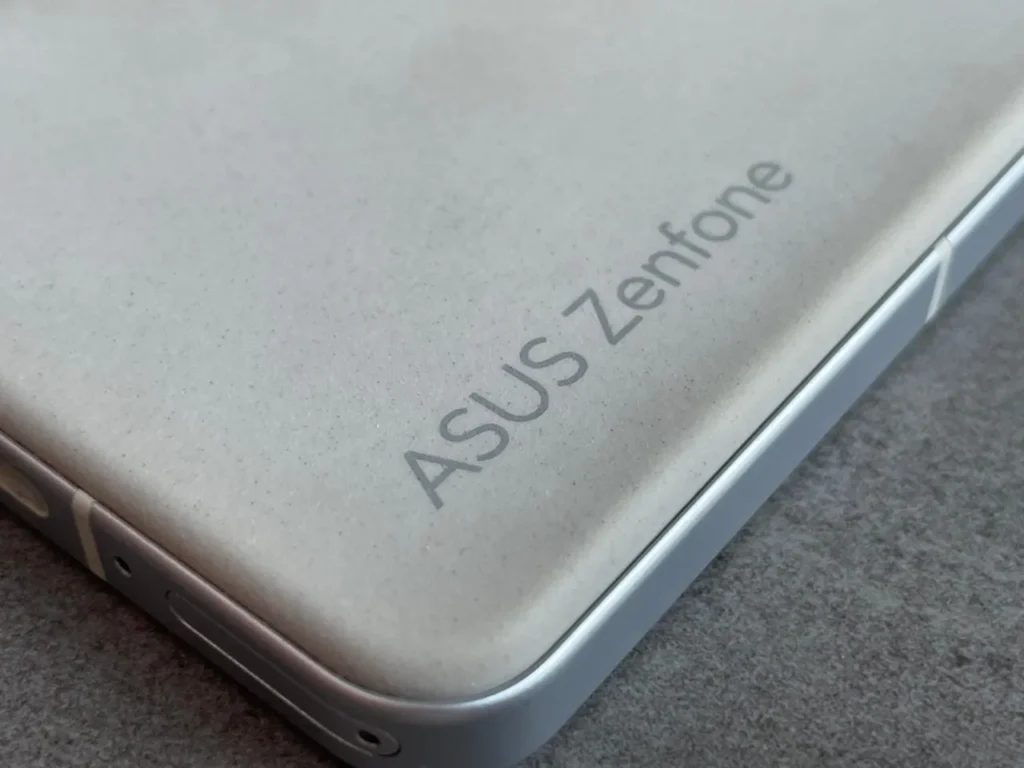
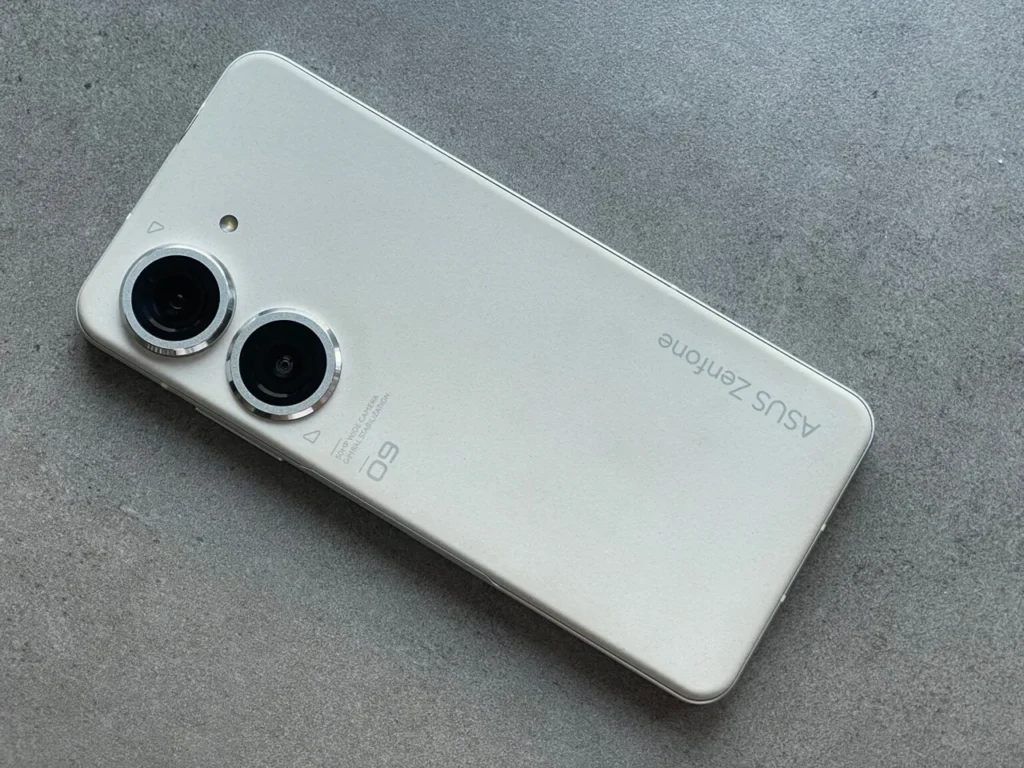
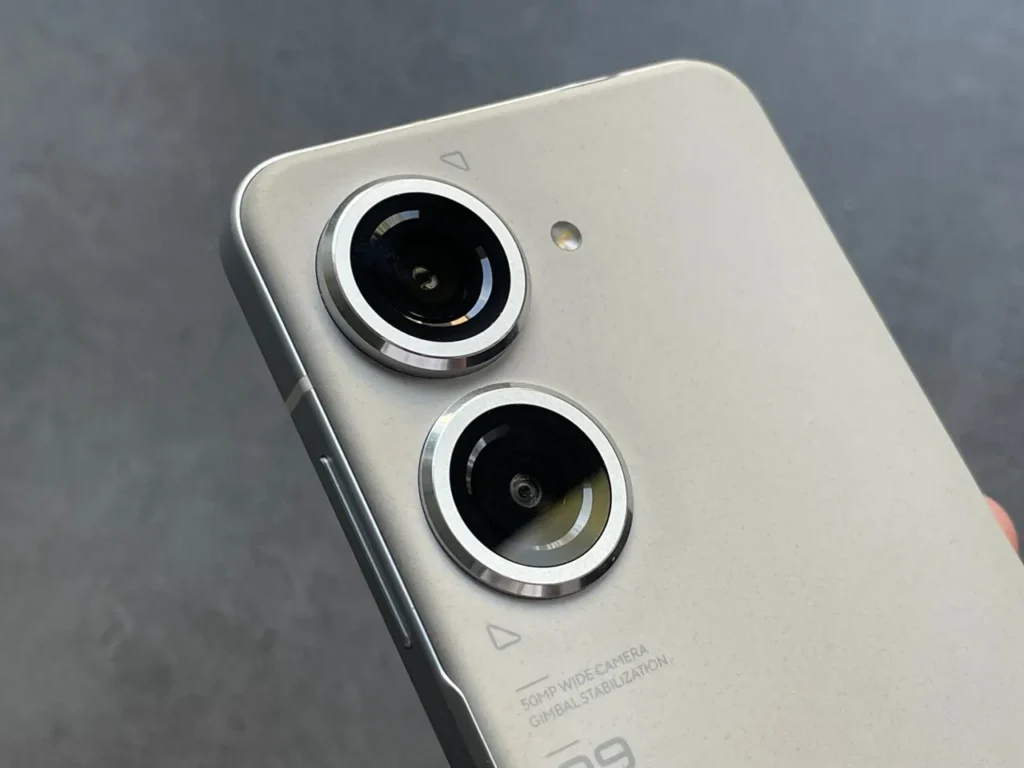
According to the recent trends, the edges of the smartphone are flat – in the case of Zenfone 9 they are made of metal, which is indicated by the presence of antenna strips. The left side of the device is mostly blank, while the bottom edge houses a slot for two SIM cards, an external speaker, a microphone opening and a USB-C port. There is another microphone port and a 3.5mm audio jack on the top, and on the right side there is a volume control and a power / lock button that also doubles as a fingerprint scanner and a virtual scroll wheel with gesture support (for example, for scrolling or moving around after long web pages).
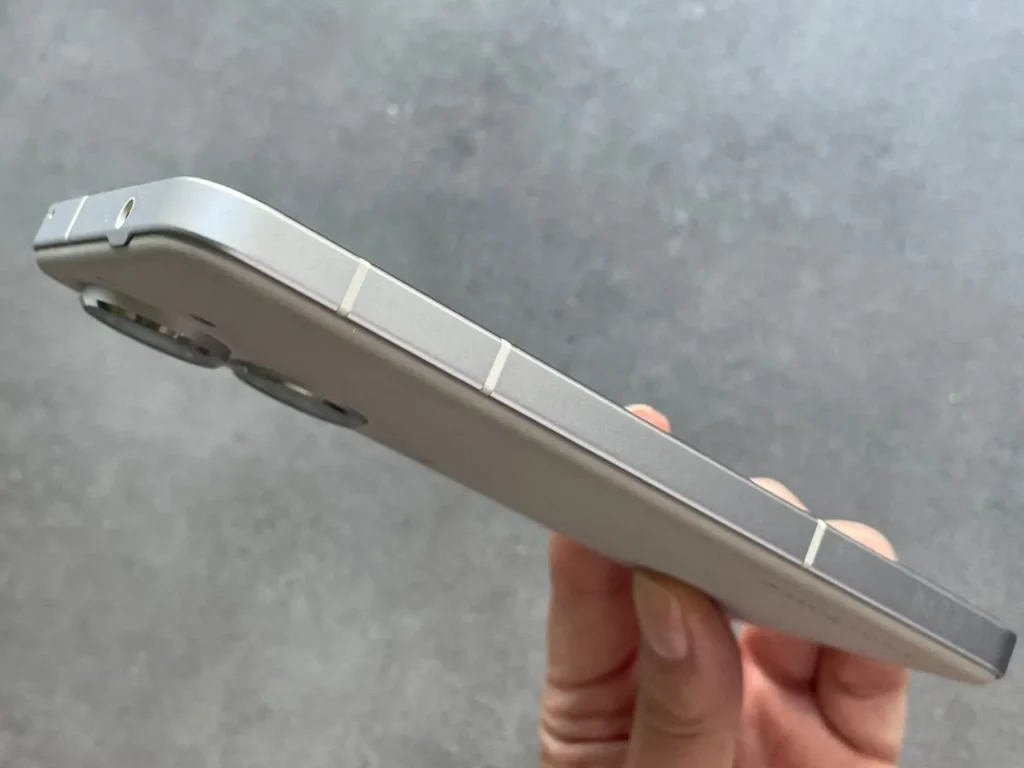
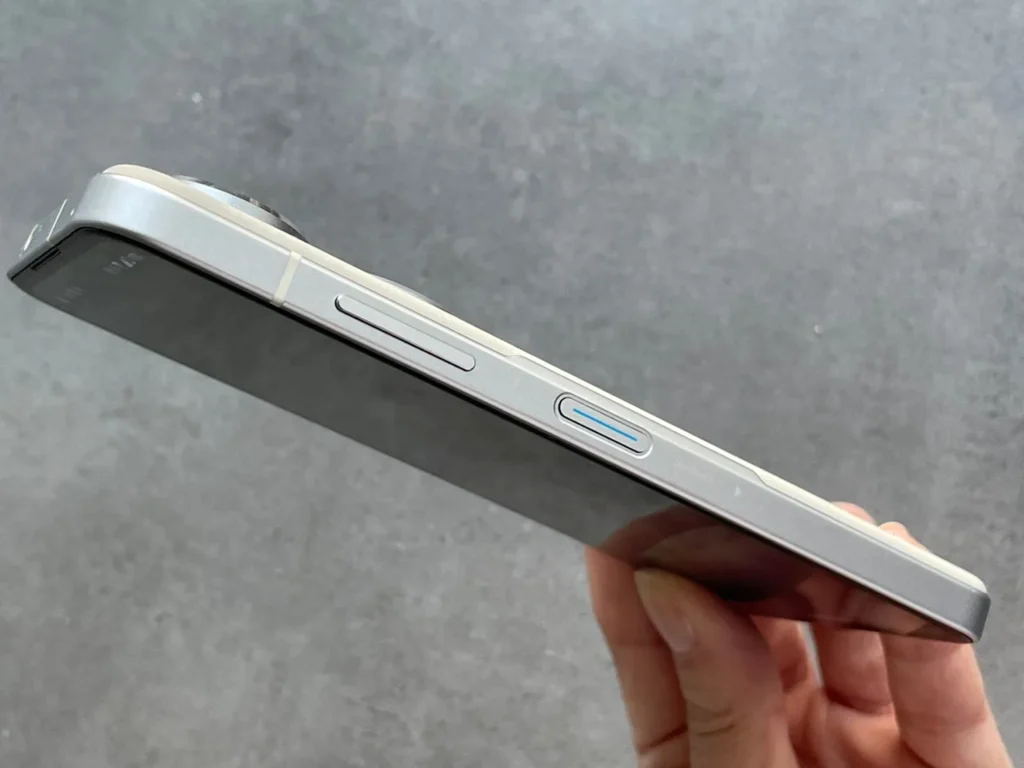
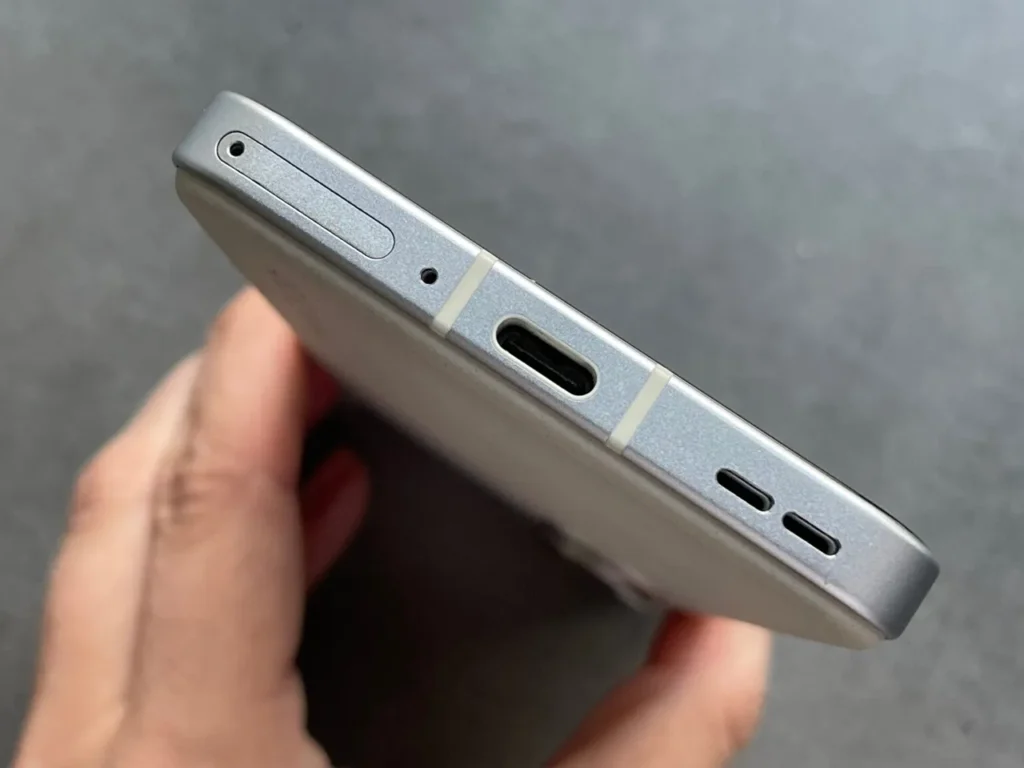
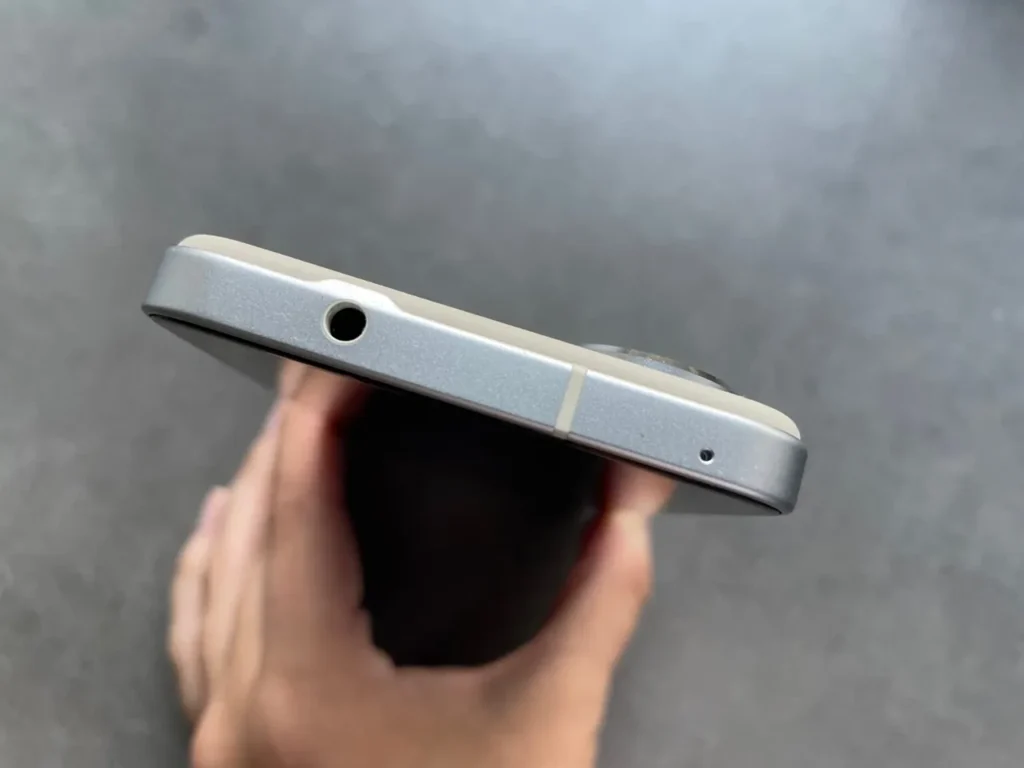
Zenfone 9 is also IP68 certified – which means a fairly high degree of water and dust resistance. It can withstand immersion in water to a depth of 1.5 meters for half an hour. The front is protected by Gorilla Glass Victus (although it is a pity that the protective foil was not glued at the factory), and with the case included in the set, we get comprehensive protection of the device.
Software
Zenfone 9 works under the control of Zen UI – an overlay that is light and pleasant to the eye. The interface works quickly and smoothly, and is also aesthetic and intuitive. I have always appreciated the interface in OnePlus smartphones for optimization, speed and comfort of work – here I had a similar experience. It is worth adding that compared to the competition, which constantly extends the period of software support for their smartphones, ASUS offers “only” two years of system updates and security patches. The last patches updated were from August 1, 2022.
I especially like the support for various gestures – primarily the use of the fingerprint scanner’s touch field, for example as a scroll, which is great for scrolling longer documents or websites, and taking a screenshot after double-tapping the back panel (a solution known to iPhone owners that). But these are just some applications – the fingerprint scanner offers a configuration for other gestures (ZenTouch): press and hold, double press and swipe, while the gesture “Double tap the back” can be set – in addition to taking screenshots – to open the camera, switch the flashlight, sound recording, etc.
It is worth noting that there is a Game Genie game mode packed with features – a feature that Zenfone inherited from ROG Phone.
The extensive personalization options and adjusting the sound with the help of the built-in equalizer with four scenarios (dynamic, music, cinema or game) also deserve a plus. You can also use the Always on Display function or the sidebar for quick access to selected applications.
Communication
The smartphone is equipped with everything necessary in a modern flagship. There is 5G, dual SIM (nano size cards), Bluetooth 5.2, WiFi 6, as well as GPS and NFC. And most importantly, all of these modules work seamlessly.
Two speakers are responsible for the sound in Zenfone 9 – on the lower edge and in the upper part of the front panel. Their overall sound quality is surprisingly good considering the size of the speakers. They are also well-balanced considering that one is directed to the side and the other is directed towards the user. These are really one of the better-sounding speakers I have ever heard – and it is similar after pairing the BT (Teufel Supreme In) headphones. The sound is loud, rich, detailed – when it comes to music, ASUS Zenfone 9 does not have to have any complexes.
It is similar during voice calls – not only the smartphone did not have any problems with communication (both with voice and data transfer) – and I used it during a long journey by train from Łódź to Berlin, in Berlin during the IFA fair and later on the way back. The network (I used a T-Mobile card) was reliable and voice calls were loud and clear – for all interlocutors. There is one more useful thing here – the ability to record calls – not only manually activated, but also automatic recording of voice calls.
Cameras
On the back panel of Zenfone 9 it is impossible not to ignore two really massive cameras: wide-angle 50 MP and ultra-wide 12 MP. On a larger smartphone, they might not be that conspicuous, but on the backs of the compact Zenfone 9 they are a bit overwhelming. It is a pity that there was no telephoto lens, but at least the manufacturer did not add any unnecessary macro cameras or depth measurement units.
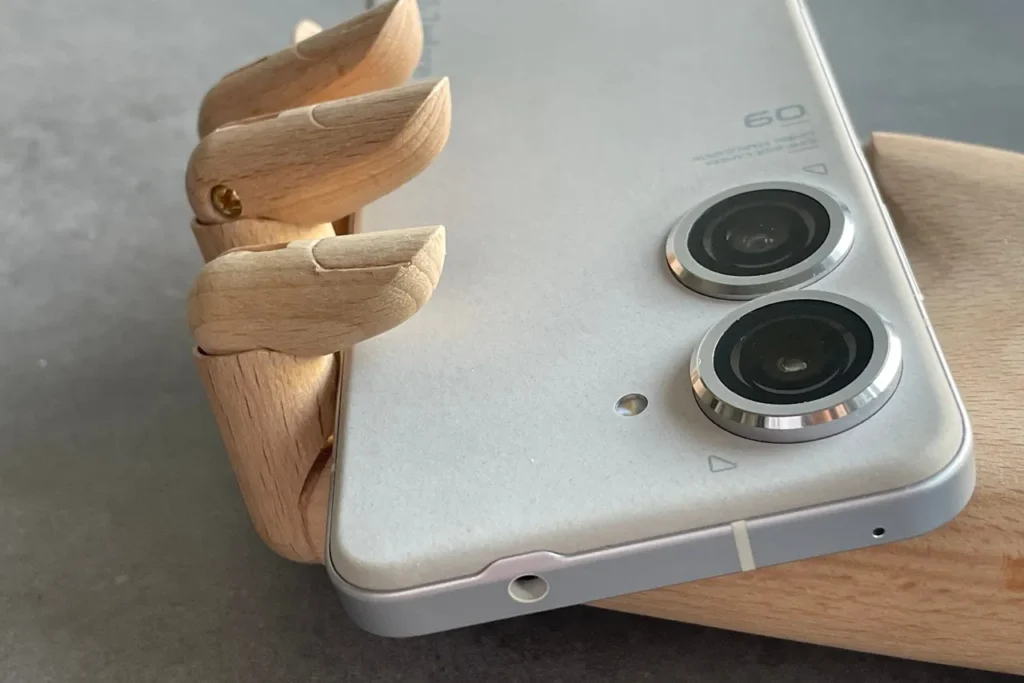
The 50 MP camera uses a Sony IMX 766 (1 / 1.56 ”) sensor – the same sensor was used in the mid-range OnePlus Nord 2T or Realme 9 Pro Plus models. To this Asus added a lens with f / 1.9 aperture and equipped the camera with a new 6-axis hybrid gimbal stabilizer, electronic image stabilization (EIS) and fast autofocus technology. The photos themselves are great in daylight, but the camera also works well after dark. Thanks to the advanced image stabilization, photos come out sharp and clear, have a lot of detail and are really pleasing to the eye. The colors are natural, sometimes a bit more saturated, but not to the same level as, for example, cameras from a Korean rival.
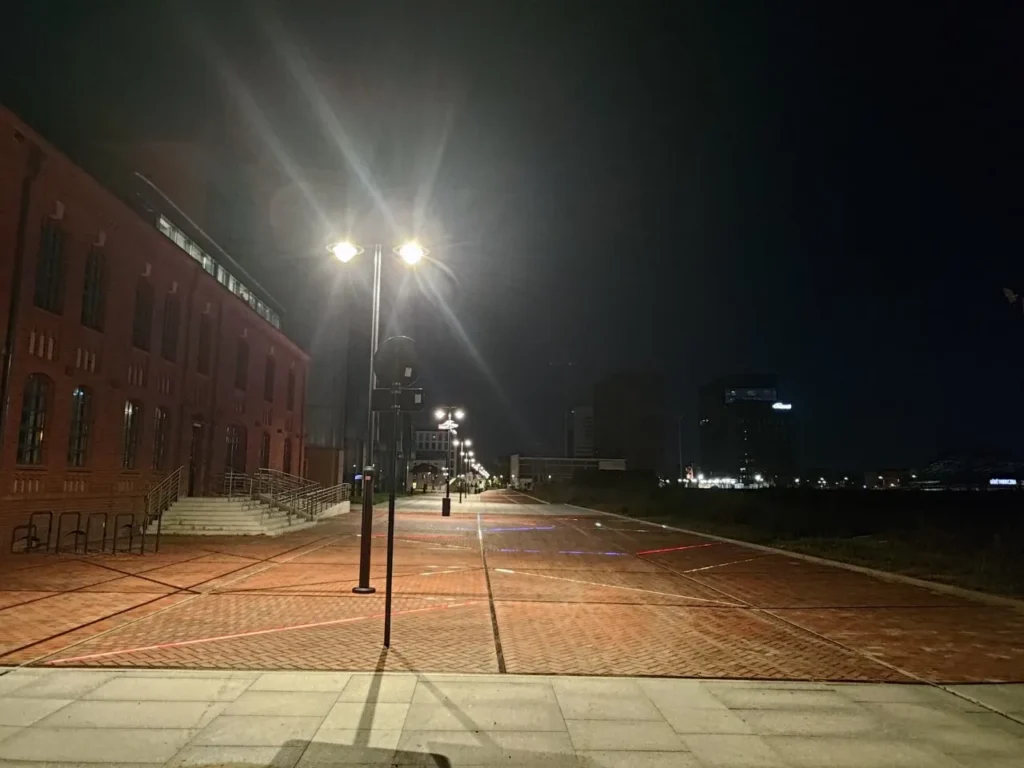



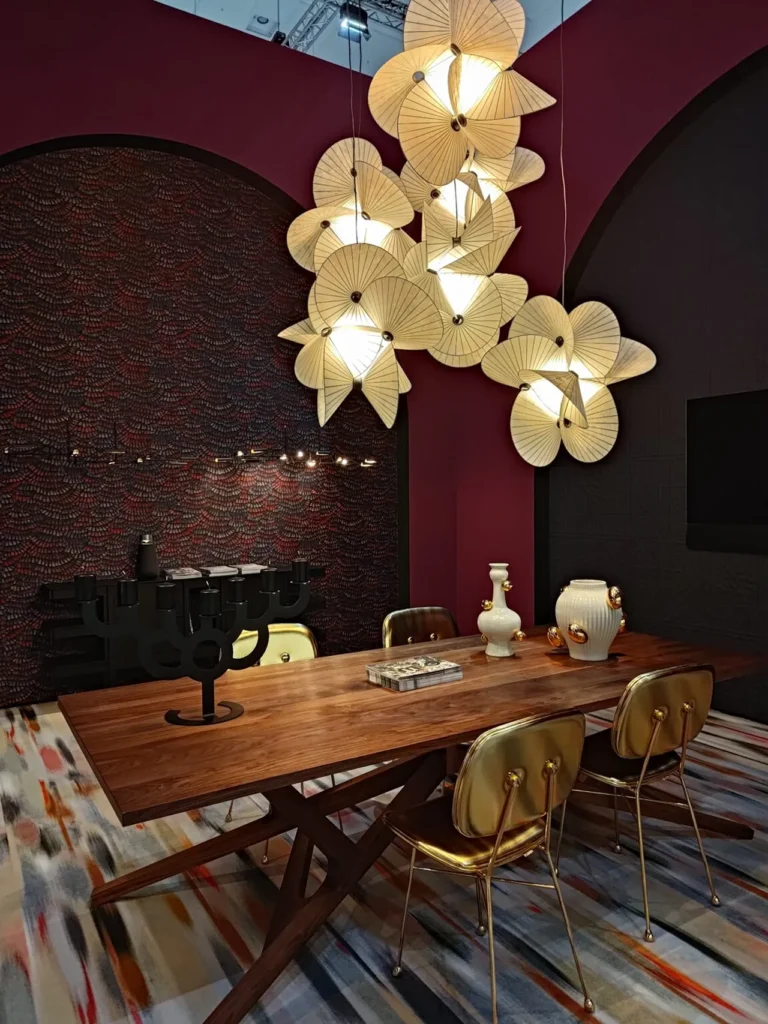

The 12MP ultra wide-angle camera uses a Sony IMX363 (1 / 2.55 ”) sensor, has an f / 2.2 aperture and a 113 ° field of view. The photos, compared to the main camera, have a noticeably worse level of details and a slightly different tone. But there is no fisheye effect that boasts. It is worth adding that this camera also has a short minimum focus distance of 4 mm, so it can be used for macro photography.




In general, the quality of the photos will satisfy people who will list them mainly for social media or capturing holiday travels, but it is unlikely to delight people who think about larger prints or would like to frame fragments of photos. We can complain about the lack of a telephoto lens – it remains to crop images from the main camera or use the digital zoom (but it’s better not to exceed 2 times zoom).
The selector camera performs very well, with good lighting copes well with exposure and colors, but the detail is at an average level. With bright illumination, the camera does not cope with obtaining the appropriate dynamic range, and in lower lighting we get quite noisy photos.
Camera app
The camera application in ASUS Zenfone 9 will not be difficult to use – it is simple and intuitive, and in addition it offers support for many modes, including light painting, night mode, panorama and a pro mode for people who want to choose individual camera settings themselves (focus , ISO, Snapshot, Exposure, White Balance) or save your photos as RAW files.
Video recording
In terms of recording, Zenfon 9 will also not disappoint – the main camera allows you to record in the following quality:
- 8K UHD (7680 × 4320 pixels) at 24 fps and using electronic image stabilization,
- 4K UHD (3840 × 2160 pixels) at 30/60 fps and EIS,
- 1080p FHD at 30/60 fps using HyperSteady
There are recording modes such as Time Lapse (4K) and Slow Motion (4K at 120p, 1080p at 240 fps or 720p at 480 fps). The front camera, in turn, allows you to record video in the maximum quality of 4K at 30 fps or FHD at 60 fps.
The quality of the recordings is great – especially in 1080p quality, when the HyperSteady stabilization mode is used. Even when walking, the footage is smooth and you can’t see any image jumps.
Performance
Asus Zenfone 9 is a flagship built on the latest Qualcomm processor – Snapdragon 8+ Gen1, equipped with 8 or 16 GB of LPDDR5 RAM and fast UFS 3.1 memory (128 or 256 GB). So you don’t have to doubt its performance. In the reviewed version (16/256 GB) it works lightning fast, runs any application without delay and is great at multitasking. And in Antutu, he can boast a score of more than a million points.
This translates into the ability to run even the most demanding games at maximum graphics settings. For example, Genshin Impact, which runs smoothly and seamlessly, and the world of Teyvat, where the heroes roam, looks fantastic. Well, maybe with one “but” – the visual experience is somewhat limited by the size of the display.
Zenfone 9 boasts an advanced cooling system that is to keep the temperatures achieved by a high-performance processor built into a small housing in check. It is designed to dissipate heat to the side frames, so not only the back, but also the edges of the device are noticeably warmed. So much so that it is sometimes difficult to hold in your hands. During the game and the most demanding benchmarks, the measured temperature reached a maximum of 53 degrees (in the highest performance mode).
He is also teased by throttling – the CPU Throttling Test application shows a performance drop of up to 75% after 15 minutes. The benchmark 3D Mark shows even bigger drops: Wild Life Stress Test – 54.3% and Wild Life Extreme Stress Test – 52.8%.
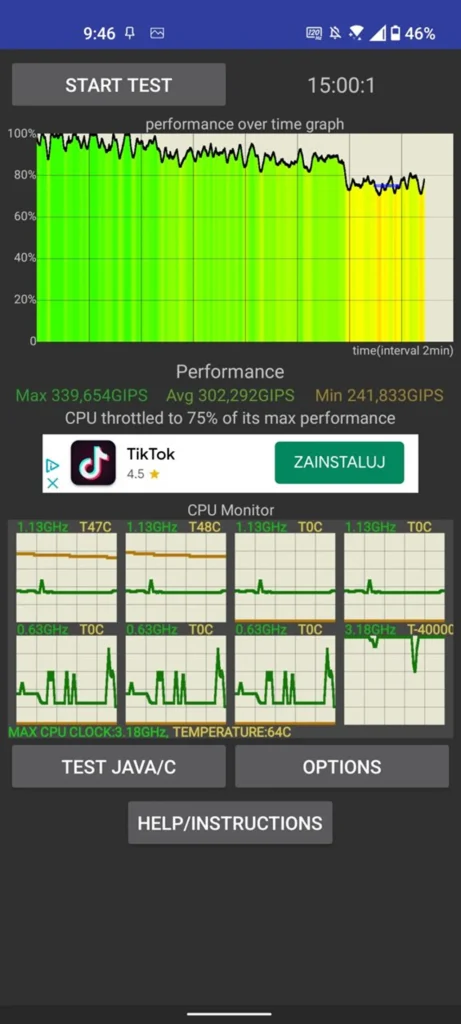
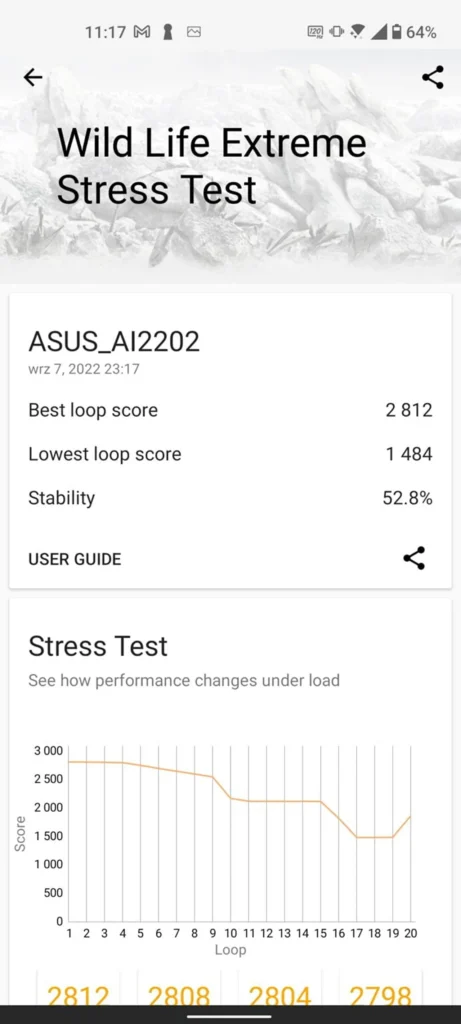
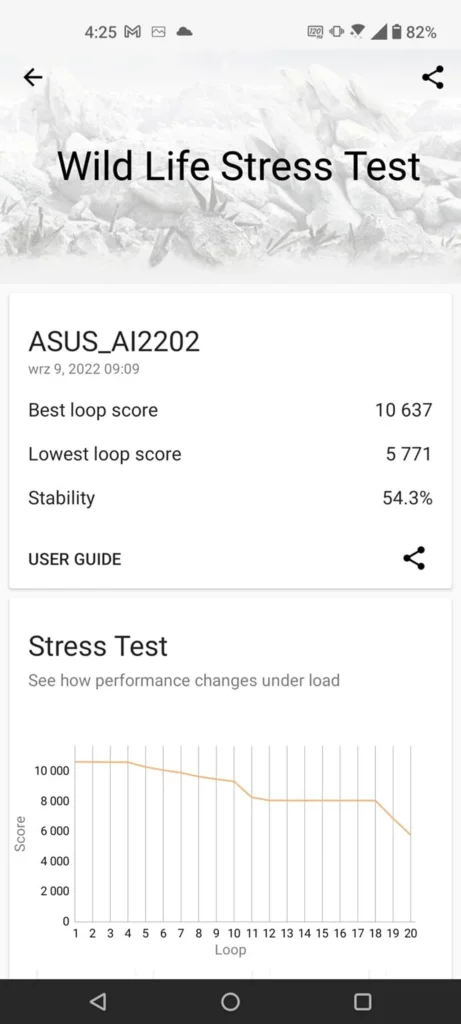
Working times and loading
The reviewed flagship does not provide either impressively long or disappointingly short operating times – with a 4300 mAh cell there is not much room to show off here, but the performance modes used are also of great importance. Overall, it allows around five hours of intense gaming or up to around 8 hours of SoT (Screen on Time) for more varied, typical smartphone applications.
When I used Zenfone 9 in the highest performance mode with 120 Hz refresh, the smartphone demanded to be recharged after one day. Here, examples of operating times were as follows: 30 minutes of playing Genshin Impact used 10% of the battery, and 2 hours of watching series with the Disney + app – 14% of the battery. In the PC Mark benchmark, the smartphone reached 10 hours and minutes. In this mode and with this energy consumption, the ASUS Zenfone 9 was a phone that needed to be recharged during or at the end of the working day.
Therefore, it is worth checking out other battery operation modes: a more balanced dynamic mode, endurance and ultra durability. For comparison, in the highest performance mode, the smartphone scored just over 10 hours in the PC Mark battery test, while in endurance mode – 14 hours and 19 minutes. Therefore, changing the mode to a more economical and appropriate juggling of software functions related to charging may allow you to extend the life of the cell and battery operation time up to 1.5 days of work.
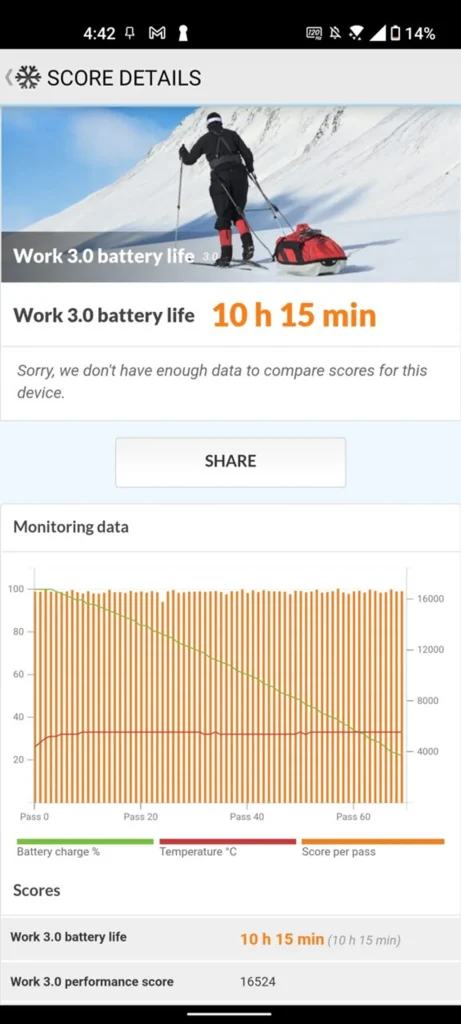
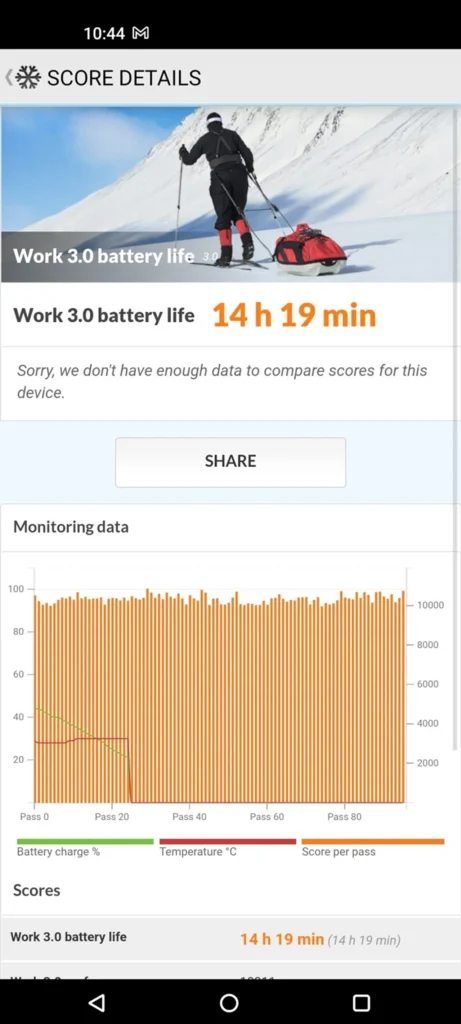
With the help of the charger from the 30 Watt set, the smartphone is charged to 58% after 30 minutes and to 89% after 60 minutes. It takes approximately an hour and 15 minutes to fully charge (phone off). Unfortunately, wired charging is the only way to top up your phone – Zenfone 9 doesn’t support wireless charging.
Read Also: ASUS ROG Phone 6 is a beast, and it has an even stronger brother – these are USD prices
Summary
ASUS Zenfone 9 would be an excellent smartphone if the manufacturer directed it to compete with the competition on the upper middle shelf, not in the top class of devices. Putting on compact size, the manufacturer could resign from the latest Snapdragon, which is not able to effectively cool down the small housing. Especially since it is difficult to use the full potential of this system – with a relatively small screen, Zenfone 9 would not be the first choice for gaming fans or fans of movies and series. And it would not have to compete in terms of photographic possibilities with better equipped flagships.

